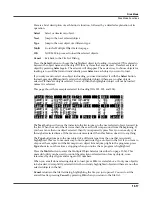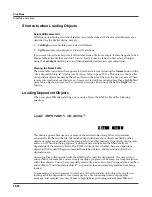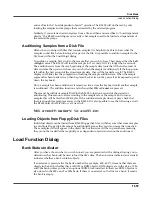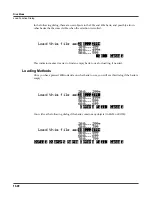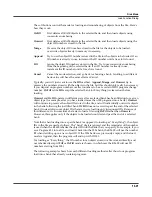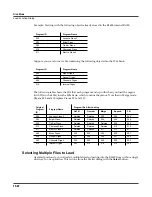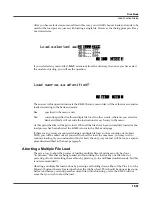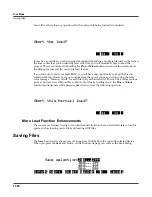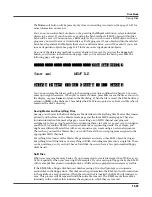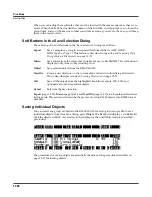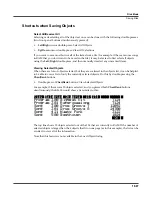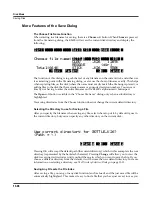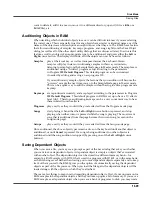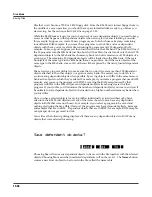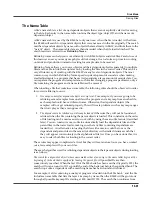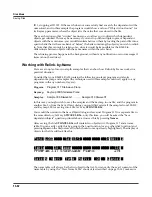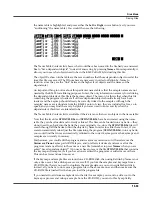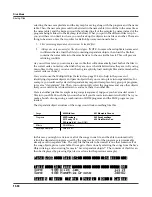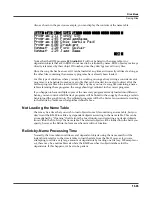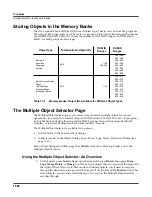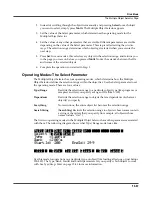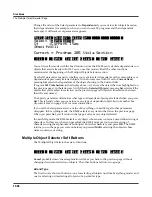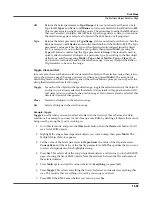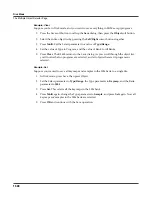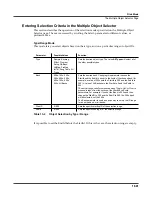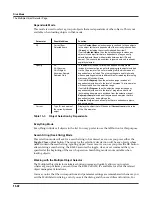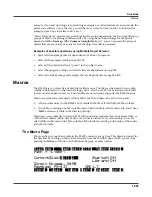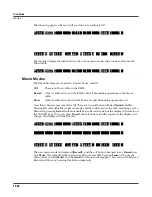
Disk Mode
Saving Files
13-29
want to delete it, add it to a macro, move it to a different directory, open it (if it is a
.K26
or a
.MAC
Þle), etc.
Auditioning Objects in RAM
When deciding which individual objects to save, it can be difÞcult to know if you are selecting
the correct ones. This is especially true if many objects have similar or identical names, or if the
names of the objects are not descriptive enough to know what they are. The K2600 has a feature
that allows auditioning of samples, keymaps, programs, and songs right from the Save Object
dialog (as well as all of the other object utility dialogs that are discussed later). To activate this
feature, scroll to an object of an appropriate type to be auditioned, and press either the
Left
or
Right
cursor button. The display will blink, and the objects can now be heard as follows:
Samples
play at their root key, as well as transposed across the keyboard. Stereo
samples will play in stereo. Auditioning samples in this way is similar to
listening to samples from the SampleMode page in Master mode. The samples are
auditioned using a ÒhiddenÓ program set up according to the parameters
in Program
199 Default Program
. This default program can be customized
if needed by editing and saving a new program 199.
If you audition any sample objects, the last one that you audition will become the
ÒpreviewÓ sample the next time you go to the SampleMode page in Master mode.
This can be a quick way to edit the sample without having to edit a program and a
keymap.
Keymaps
are reproduced accurately, and are played according to the parameters in Program
199 Default Program
. This default program in ROM is set up to have a 0% effects
level (dry). Therefore, auditioning keymaps can be a very convenient way to hear
them isolated from the effects.
Programs
play exactly as they would if they were selected from the Program-mode page.
Songs
start playing when either the
Left
or
Right
cursor button is pressed, and stop
playing when either cursor is pressed while the song is playing. The most recent
song that is auditioned from this page become the current song (as seen on the
Song-mode page).
Setups
play exactly as they would if they were selected from the Setup-mode page.
Once auditioned, the above object types remain active on the keyboard until another object is
auditioned, or until
Cancel
is pressed. If a song is being auditioned, no other objects are
auditioned until the song audition is stopped (by pressing one of the
Left
or
Right
cursor
buttons).
Saving Dependent Objects
When you save a Þle, you may see a prompt as part of the Save dialog that asks you whether
you want to save dependent objects. A dependent object is simply an object thatÕs associated
with another object. The dependent object can be stored in a different memory bankÑfor
example, a RAM sample with ID 301 thatÕs used in a program with ID 402, or in the same bank
as the Þle being saved. Rather than forcing you to save dependent objects separately and to keep
track of them yourself, the K2600 gives you the option of automatically saving the dependent
objects as part of the Þle you save. When you load the Þle again, the dependent objects will be
loaded along with the objects to which theyÕre attached.
There are a few things to keep in mind regarding dependent objects. First, itÕs not uncommon for
RAM samples to be dependent objects, and they can take up quite a bit of memory. If you save a
RAM sample as a dependent object when you save a bank of programs to disk, you may create
Summary of Contents for K2600 BEST OF VAST - REV A
Page 76: ......



